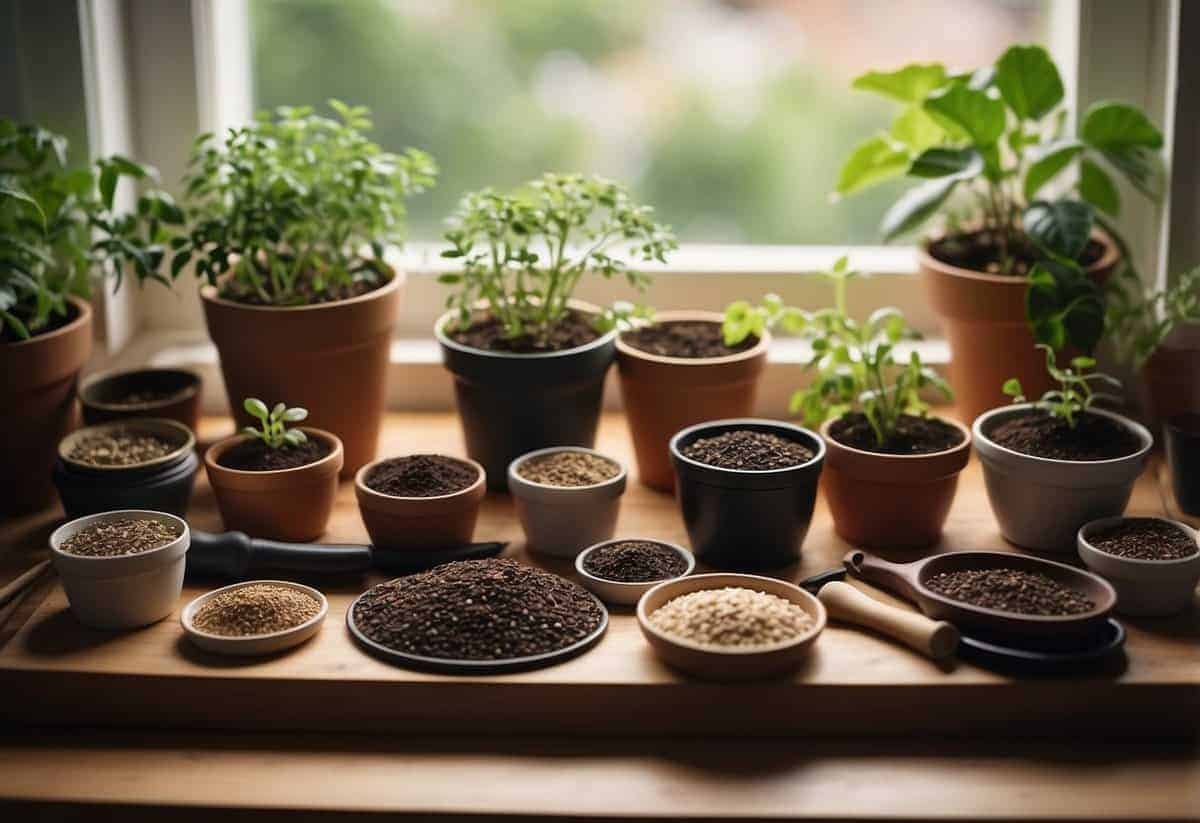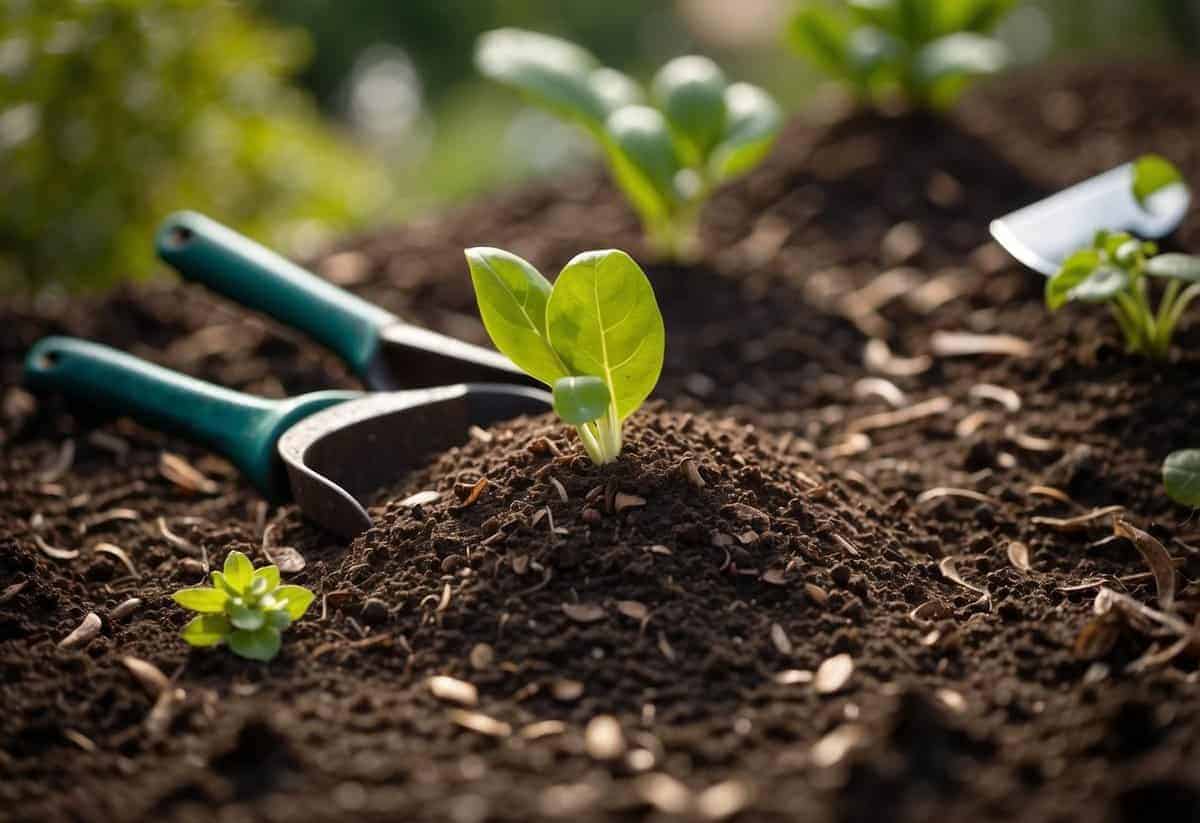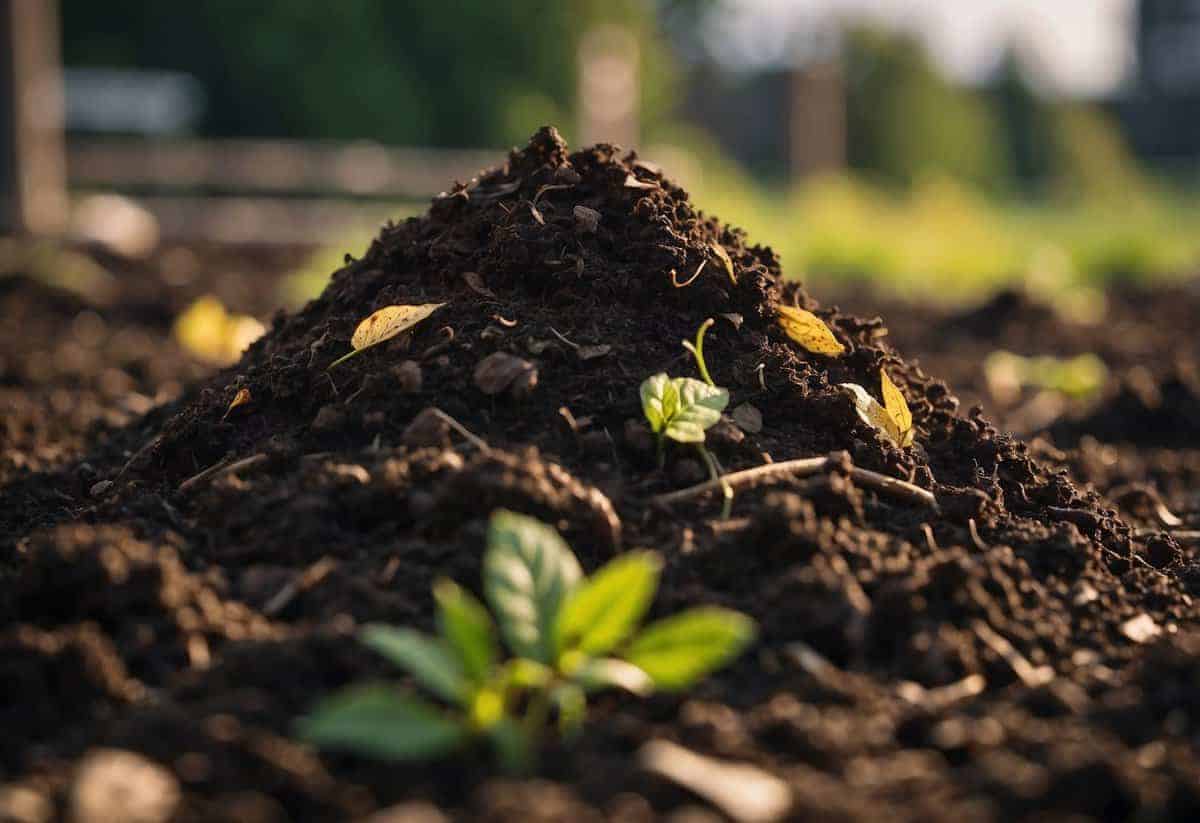Tips to Start a Garden: Easy Steps for Beginners
Gardening can be a rewarding hobby that brings fresh produce and beautiful flowers to your home. It allows you to reconnect with nature and enjoy the fruits of your labor, whether it’s lush vegetables, fragrant herbs, or colorful blooms.

Discover the essential tips to start a garden and watch your efforts flourish. With some basic knowledge and a bit of planning, you’ll be on your way to creating a thriving garden that fits your space and taste preferences.
1) Choose the Right Location

Finding the ideal spot for your garden is key. Look for a place that gets at least 6 to 8 hours of sunlight every day. Most vegetables thrive with plenty of sun.
Consider areas close to a water source. This makes it easier to keep your plants hydrated. Avoid spots where water tends to pool, as too much moisture can harm plants.
Lastly, make sure the area is easily accessible. You’ll want to be able to reach your garden without hassle for daily care and harvesting. Happy gardening!
2) Test your soil

Before planting, it’s important to know the type of soil in your garden.
Start by collecting soil samples from different spots about 4-6 inches deep. Mix these samples in a bucket.
To check your soil’s pH, mix two tablespoons of soil with half a cup of vinegar. If it fizzes, your soil is alkaline.
If you need more detailed results, use a soil testing kit. Follow the instructions for the best results. This will help you understand what nutrients your soil might need.
Check more details on how to test soil.
3) Start with Easy Plants

Starting your garden with easy-to-grow plants can make the process enjoyable and less overwhelming. Opt for beginner-friendly vegetables like lettuce, radishes, and green beans.
Herbs like basil, mint, and parsley are also great options. They grow quickly and can be used in many dishes.
Starting with these plants will help you gain confidence and experience without too much hassle. For more details, visit this guide to starting a garden.
4) Water Wisely

Set your mower at 2.5 inches or higher to promote deeper roots. Water only when it is necessary.
If watering is required, do it between 4 a.m. and 8 a.m. to reduce water loss due to evaporation.
When you water, aim at the base of the plant to avoid wetting the foliage.
Mulching around your plants prevents runoff and keeps the soil moist longer.
5) Use Organic Mulch

Adding organic mulch to your garden can greatly improve your soil. It helps retain moisture, which means you won’t have to water as often.
Organic mulch also adds nutrients to the soil as it breaks down. Using materials like compost can be especially beneficial.
Another benefit is weed control. A good layer of mulch can keep weeds from sprouting, giving your plants a better chance to thrive.
For more tips on using organic mulch, check out this comprehensive guide.
6) Compost regularly

Adding compost to your garden soil gives your plants vital nutrients. You can start by building a compost bin or buying a tumbler. Place it in a partly sunny spot.
Collect kitchen scraps and yard waste for your compost. Use a mix of “green” materials, like fruit peels, and “brown” materials, like dead leaves.
Turn your compost pile often to keep it airy and help it break down. Keep it moist, like a wrung-out sponge.
Your compost should heat up between 135°F and 160°F for the best results. This process will do wonders for your garden soil.
7) Rotate crops

Rotating crops means changing where you plant different types of vegetables each year. This helps keep the soil healthy and reduces problems with pests and diseases.
When you grow the same crop in the same spot, pests and diseases can build up in the soil. By rotating crops, pests lose their host plants, halting their life cycles.
Plant crops that use different nutrients in different spots. For example, plant leafy greens where root vegetables grew the year before. This way, the soil can recover and stay rich in nutrients, making your garden more productive.
8) Pay attention to plant spacing

Giving your plants enough space is super important. When you don’t, they fight over sunlight and nutrients.
For raised beds, follow the spacing guidelines on the plant tags. This way, you won’t waste space between rows.
Tightly planting vegetables like carrots or radishes can help control weeds and keep the soil moist. Proper spacing makes your garden healthier and more productive.
9) Control pests naturally

Keeping pests out of your garden doesn’t require harsh chemicals. Simple, natural methods can be very effective.
A clean garden is a happy garden. Remove leafy debris, dead plants, and decaying material. Insects like to hide in these spots.
Consider using food-grade diatomaceous earth. It acts as an abrasive barrier against crawling insects like stinkbugs and can be sprinkled around fruits and vegetables.
Another easy solution is a DIY insecticide. Mix vegetable oil, mild soap, and water in a spray bottle. A few spritzes can keep pests at bay.
10) Prune Regularly

Pruning helps your plants grow the way you want. By trimming certain parts, you can guide their growth direction.
Cut back any dead or overgrown branches to give your plants room to breathe and thrive.
Always clean your pruning tools to prevent spreading diseases. Be gentle and mindful of the plant’s shape. For tips on pruning methods, check out this guide. Happy gardening!
Choosing the Right Location

Selecting the right spot for your garden is key to a successful harvest. Focus on areas with good sunlight, fertile soil, and proper drainage to ensure healthy plant growth.
Assessing Sunlight Levels
Sunlight is crucial for most plants, especially vegetables. Many crops, like tomatoes and peppers, need at least 6 to 8 hours of direct sunlight daily. Observe your yard throughout the day to identify spots with consistent sun.
If your space doesn’t get enough light, consider growing leafy greens, which can thrive with as little as 4 to 6 hours of sun. You can use a sunlight meter to measure the light levels accurately. Ensuring adequate sunlight helps your plants produce more flowers and fruit, leading to a bigger harvest.
Soil Quality and Drainage
Soil quality impacts plant health and growth. Aim for well-drained, fertile soil that’s rich in organic matter. Test your soil’s pH and nutrient levels; you can get testing kits from garden centers. Ideal soil for most plants is slightly acidic to neutral, with a pH between 6.0 and 7.0.
Good drainage is just as important. Poor drainage can lead to root rot. To test drainage, dig a hole about 12 inches deep and fill it with water. If the water drains within a few hours, the drainage is adequate. Amend heavy clay soil with compost or sand to improve its structure and drainage.
Preparing Your Garden Beds

Preparing your garden beds is crucial for healthy plant growth. Key steps include clearing and tilling the soil, followed by adding compost and fertilizers to enrich the soil with necessary nutrients.
Clearing and Tilling the Soil
Start by removing any existing grass, weeds, or debris from the garden area. You can use a garden hoe or a shovel to clear the area. Roots and rocks should be taken out to ensure the soil is easy to work with.
Once cleared, till the soil to a depth of about 8 to 12 inches. This helps to aerate the soil and make it loose for planting. A rototiller can make this job easier, but a garden fork or spade works too. Breaking up the soil also helps to mix in organic matter evenly.
After tilling, rake the soil to smooth it out and remove any remaining large clumps. This step will give you a nice, even surface for planting.
Adding Compost and Fertilizers
Adding compost enriches the soil, providing essential nutrients and improving soil structure. Spread a 2-3 inch layer of compost over the tilled soil. Compost can be homemade or store-bought and should be well-decomposed.
Mix the compost into the soil using your rake or a garden fork. This ensures that the nutrients are well-distributed and reach the plant roots effectively.
Next, consider adding fertilizers to give your plants a nutrient boost. Choose a balanced fertilizer or one that suits the specific needs of your garden plants. Follow the instructions on the fertilizer package for amounts and application methods.
Incorporate the fertilizer into the soil with a rake or tiller. Make sure it’s evenly mixed to prevent nutrient hotspots that could harm plant roots.
Selecting Suitable Plants

Choosing the right plants for your garden involves thinking about your local climate and how different plants can support each other. This helps your garden thrive with less effort and fewer problems.
Considering Local Climate
Your local climate plays a huge role in plant selection. Start by checking what hardiness zone you live in. This tells you which plants can survive your winter temperatures. For example, if you’re in zone 5, look for plants like daylilies and lavender that tolerate cold winters.
Next, consider the amount of sunlight your garden gets. Some plants love full sun, while others prefer shade. Vegetables like tomatoes and peppers need at least six hours of sunlight. In contrast, hostas and ferns thrive in shady spots.
Finally, think about your area’s rainfall. If you live where it rains a lot, choose plants that don’t mind getting their roots wet, such as marigolds and petunias. In dry regions, opt for drought-tolerant plants like succulents and lavender.
Companion Planting
Companion planting is about growing plants that benefit each other. Some plants repel pests or attract beneficial insects, making it easier to grow a healthy garden.
For instance, planting basil next to tomatoes can improve growth and flavor while keeping pests like aphids away. Marigolds are excellent companions for many vegetables because they deter nematodes and other pests. You can also grow nasturtiums with cucumbers to keep beetles at bay.
Moreover, some plants can enhance nutrient uptake. Beans and peas fix nitrogen in the soil, which helps leafy greens like spinach and lettuce grow better. Tall plants like corn can provide shade for shorter, shade-loving plants such as lettuce.
Using companion planting strategies can lead to a more productive and pest-resistant garden. Click here to see more examples of beneficial plant pairings.







